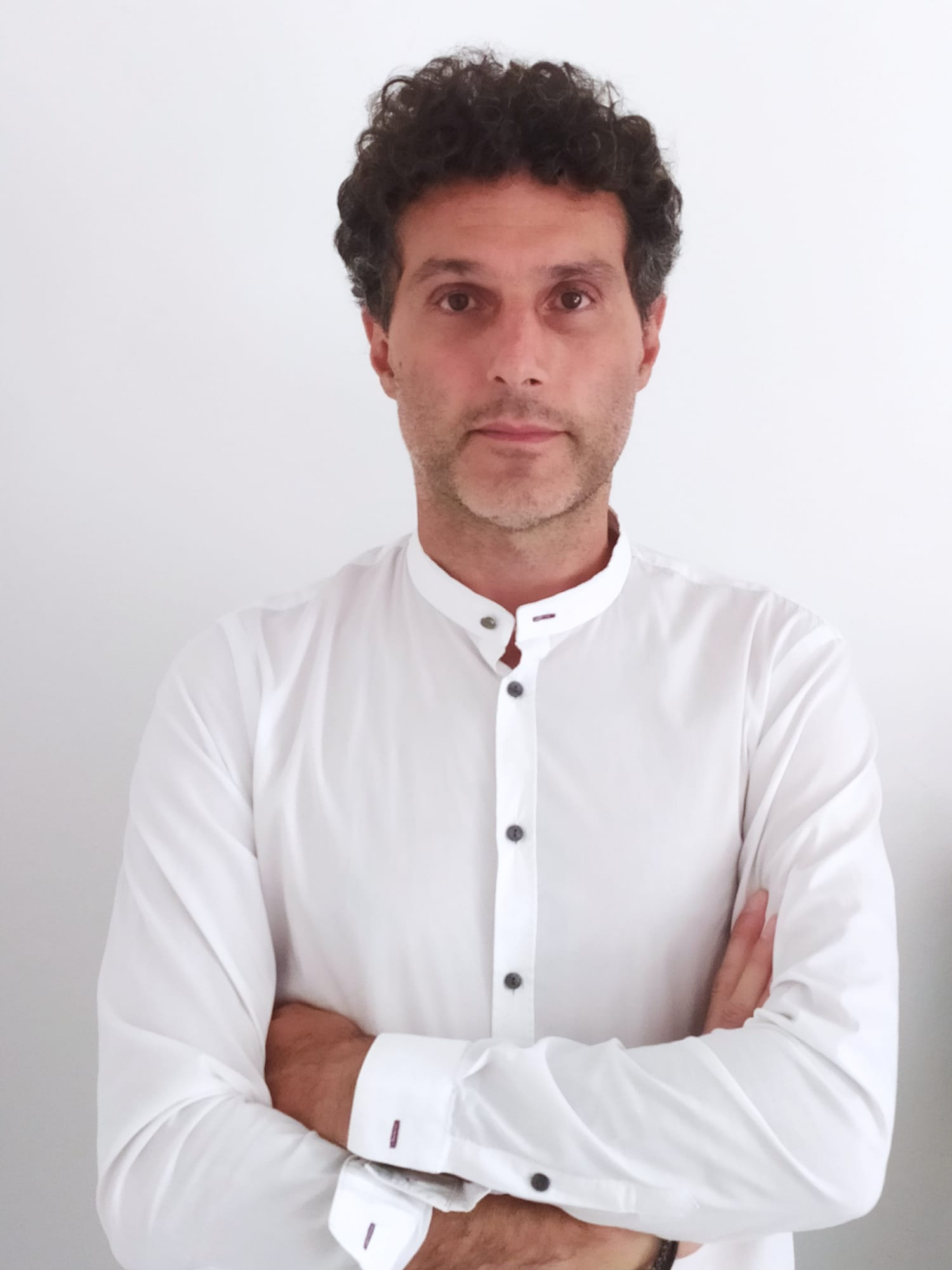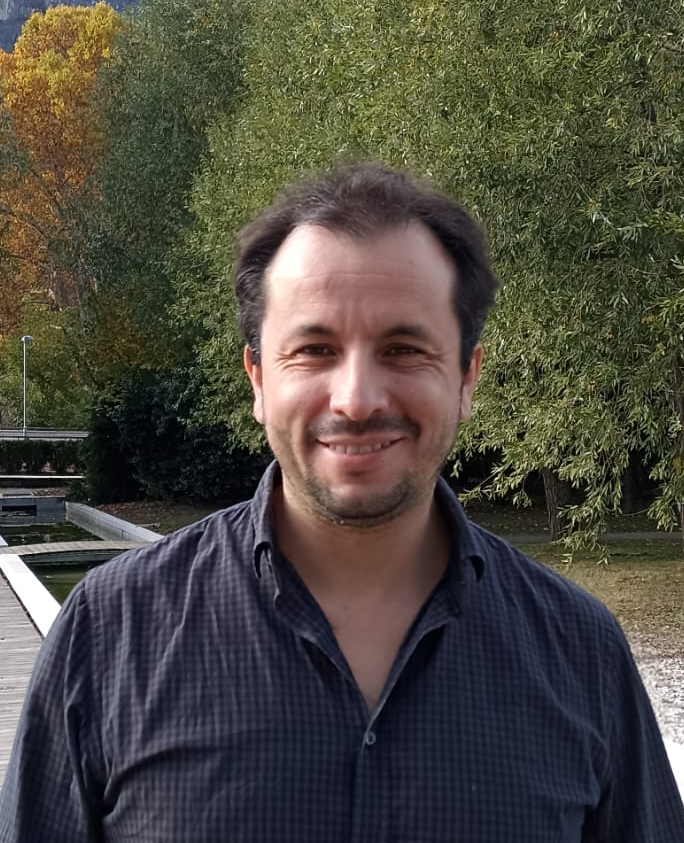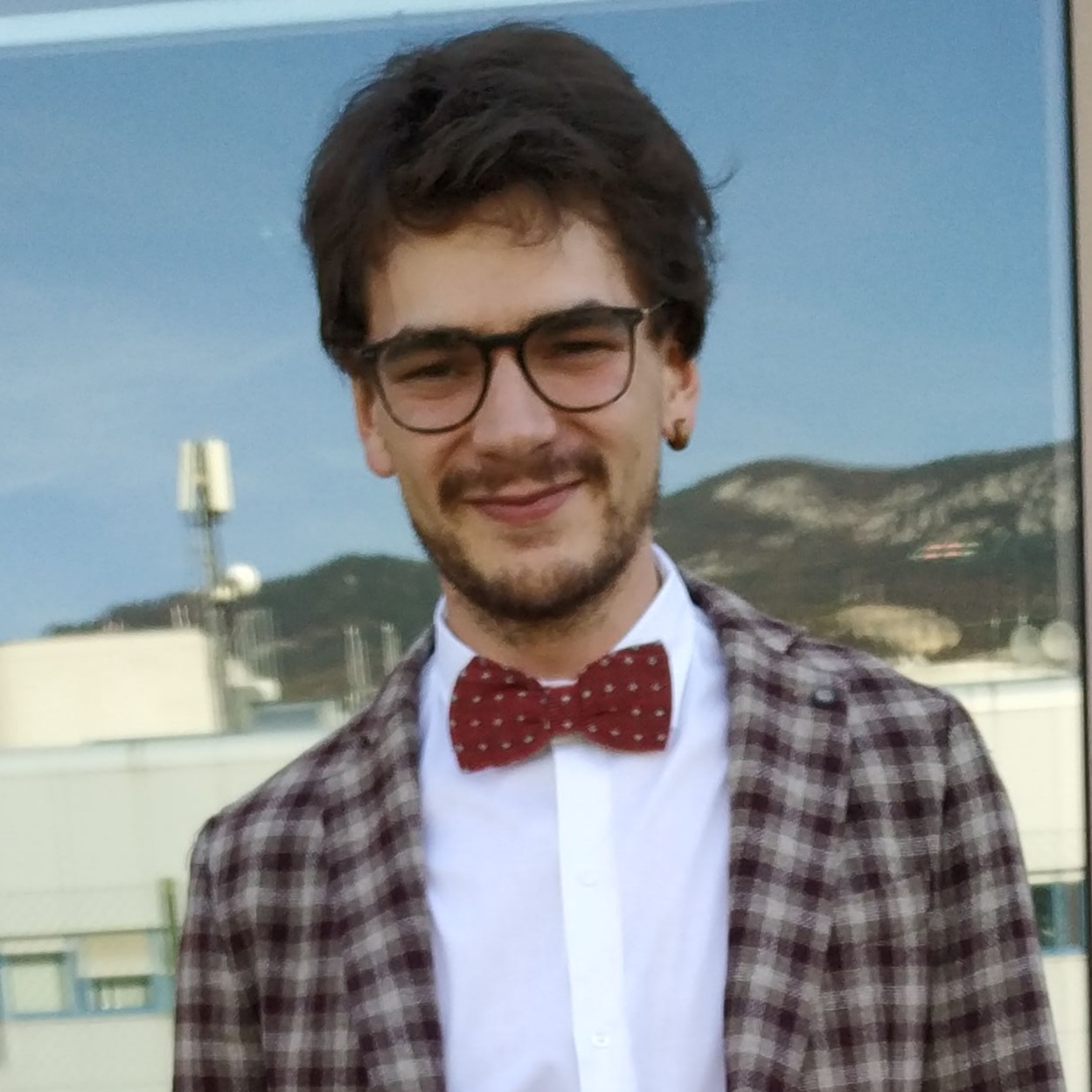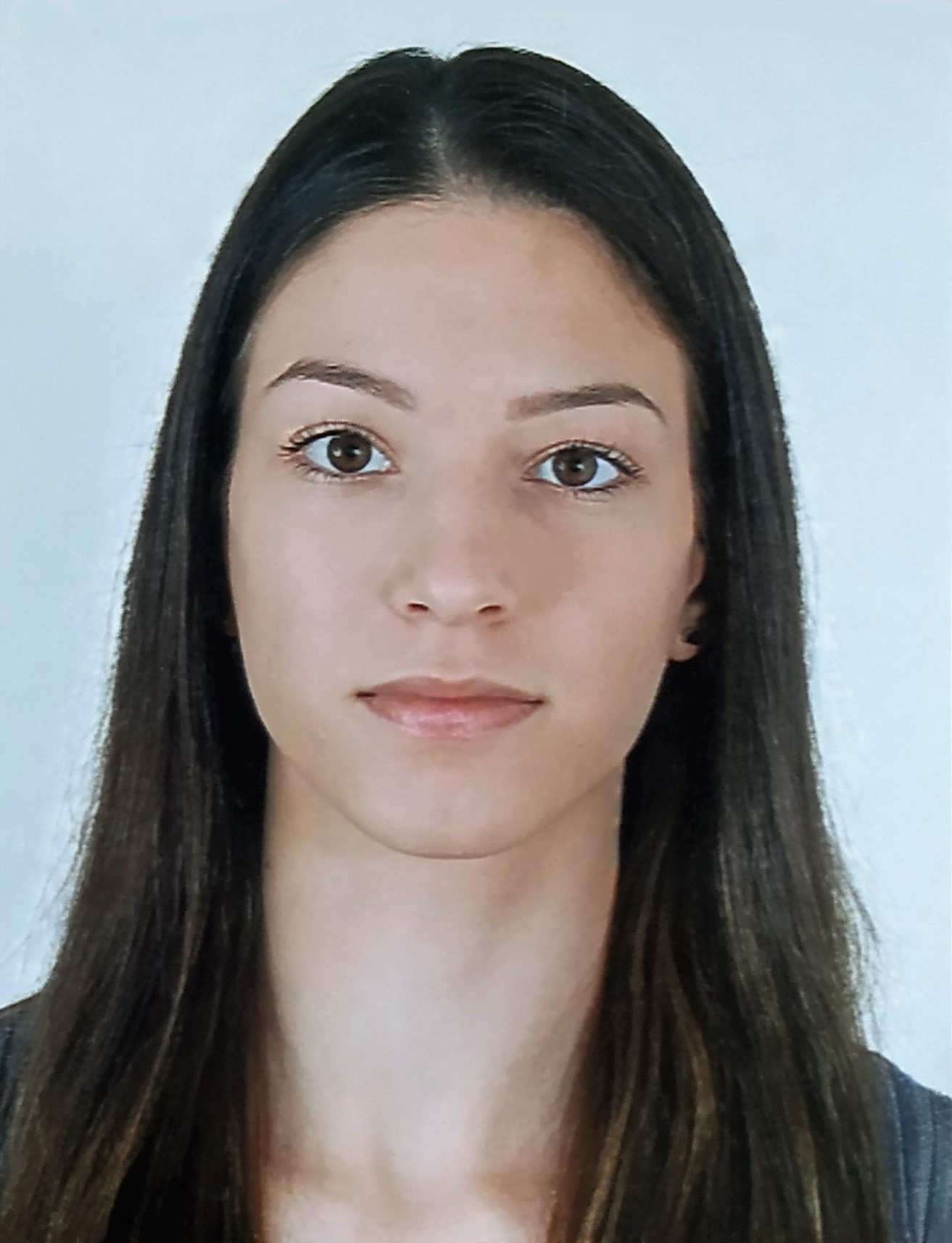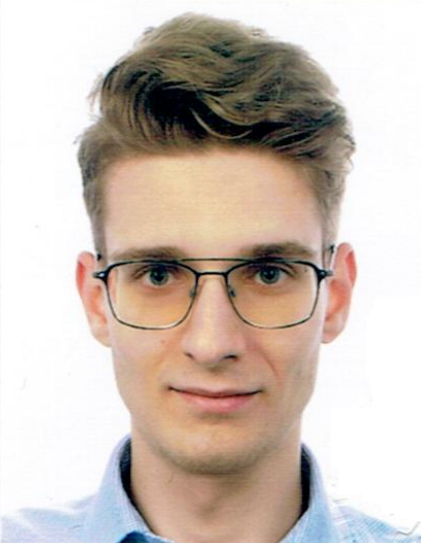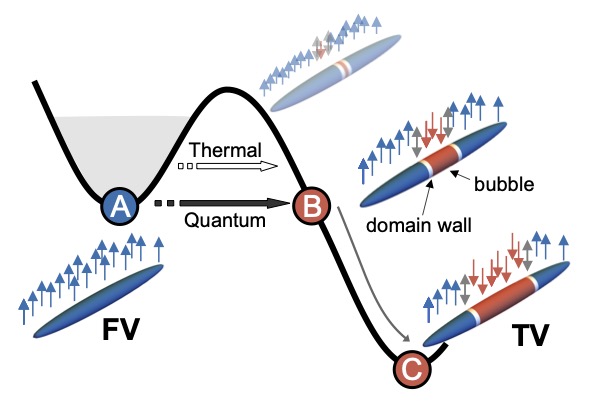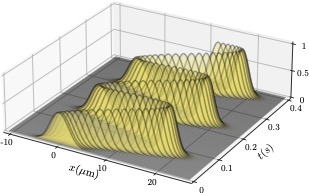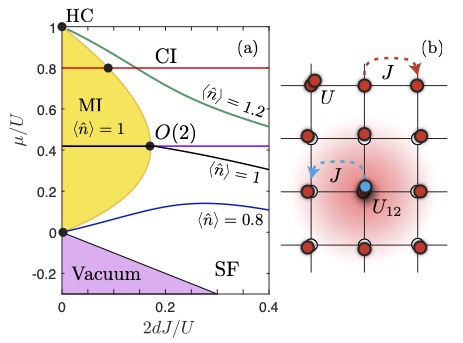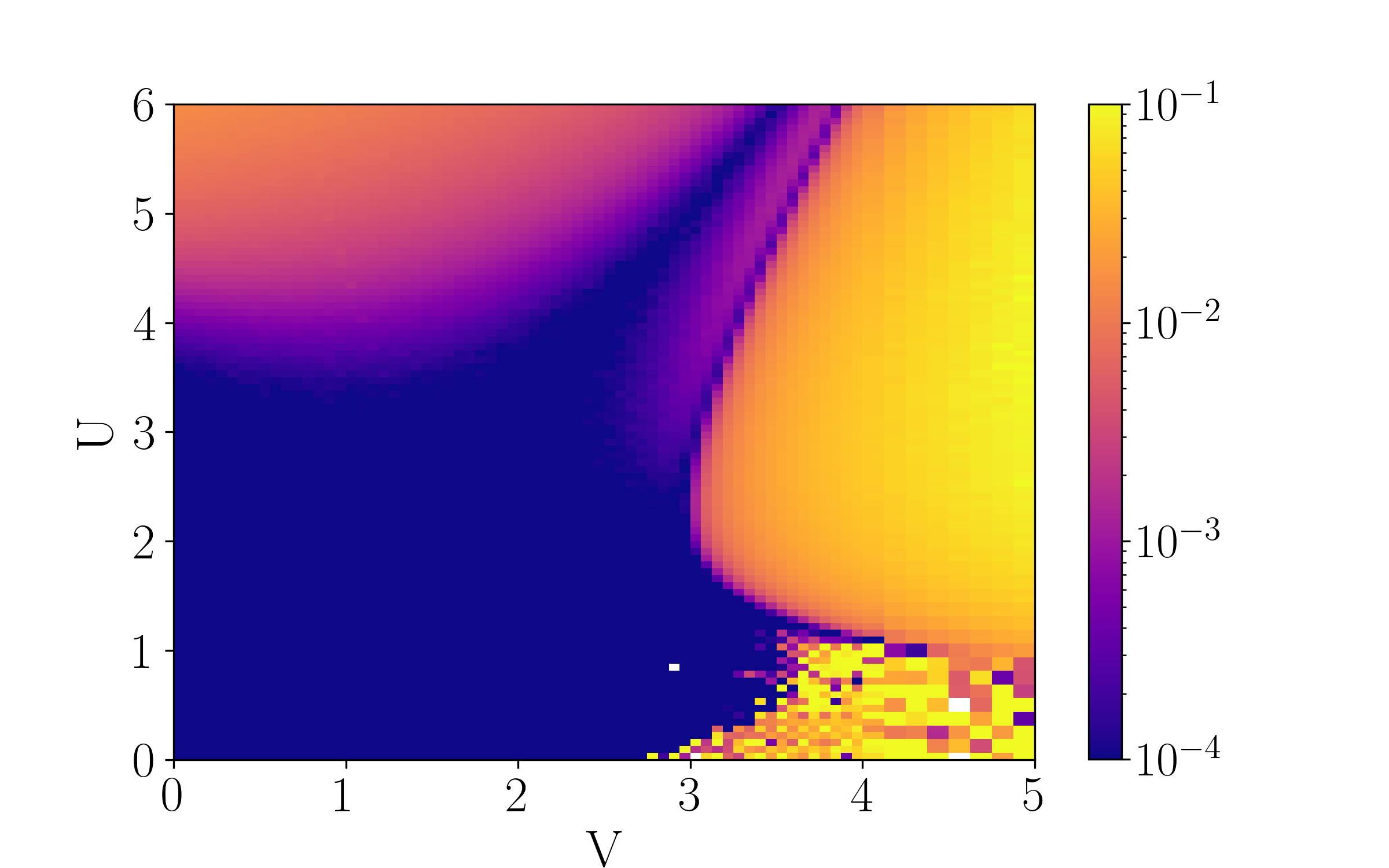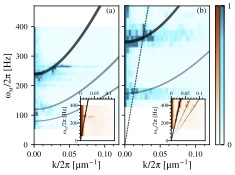Pre-Print
-
Analog Hawking radiation from a spin-sonic horizon in a two-component Bose-Einstein condensate
Anna Berti, Lennart Fernandes, Salvatore Giulio Butera, Alessio Recati, Michiel Wouters, Iacopo Carusotto
arXiv:2408.17292 -
Anomalous Doppler effect in superfluid and supersolid atomic gases
Tomasz Zawiślak, Marija Šindik, Sandro Stringari, Alessio Recati
arXiv:2408.16489
Recent publications
-
Decoherence and momentum relaxation in Fermi-polaron Rabi dynamics: a kinetic equation approach
Tomasz Wasak, Matteo Sighinolfi, Johannes Lang, Francesco Piazza, Alessio Recati
Phys. Rev. Lett. 132, 183001 (2024) -
Extracting Many-Body Quantum Resources within One-Body Reduced Density Matrix Functional Theory
Carlos L. Benavides-Riveros, Tomasz Wasak, Alessio Recati
Physical Review Research 6, L012052 (2024) -
Sound, superfluidity and layer compressibility in a ring dipolar supersolid
Marija Šindik, Tomasz Zawiślak, Alessio Recati, Sandro Stringari
Phys. Rev. Lett. 132, 146001 (2024) -
Observation of false vacuum decay via bubble formation in ferromagnetic superfluids
Alessandro Zenesini, Anna Berti, Riccardo Cominotti, Chiara Rogora, Ian G. Moss, Thomas P. Billam, Iacopo Carusotto, Giacomo Lamporesi, Alessio Recati, Gabriele Ferrari
Nature Physics 20, 558 (2024) -
Bose–Einstein condensation
Leonardo Fallani, Massimo Inguscio, Alessio Recati, Sandro Stringari
Encyclopedia Of Condensed Matter Physics 1, 68 (2024) -
Supersolidity in ultracold dipolar gases
Alessio Recati and Sandro Stringari
Nature Reviews Physics 5, 735 (2023) -
Oscillating Solitons and AC Josephson Effect in Ferromagnetic Bose-Bose Mixtures
Sebastiano Bresolin, Arko Roy, Gabriele Ferrari, Alessio Recati, Nicolas Pavloff
Phys. Rev. Lett. 130, 220403 (2023) -
Ferromagnetism in an extended coherently-coupled atomic superfluid
Riccardo Cominotti, Anna Berti, Clement Dulin, Chiara Rogora, Giacomo Lamporesi, Iacopo Carusotto, Alessio Recati, Alessandro Zenesini, Gabriele Ferrari
Phys. Rev. X 13, 021037 (2023) -
Mass-driven vortex collisions in flat superfluids
Andrea Richaud, Giacomo Lamporesi, Massimo Capone, Alessio Recati
Phys. Rev. A 107, 053317 (2023) -
Lattice polarons across the superfluid to Mott insulator transition
V. E. Colussi, F. Caleffi, C. Menotti, A. Recati
Phys. Rev. Lett. 130, 173002 (2023) -
Finite temperature ferromagnetic transition in coherently coupled Bose gases
Arko Roy, Miki Ota, Franco Dalfovo, Alessio Recati
Phys. Rev. A 107, 043301 (2023) -
Phase Diagram Detection via Gaussian Fitting of Number Probability Distribution
Daniele Contessi, Alessio Recati, Matteo Rizzi
Phys. Rev. B 107, L121403 (2023) -
Creation and robustness of quantized vortices in a dipolar supersolid when crossing the superfluid-to-supersolid transition
Marija Sindik, Alessio Recati, Santo Maria Roccuzzo, Luis Santos, Sandro Stringari
Phys. Rev. A 106, L061303 (2022) -
Coherently Coupled Mixtures of Bose-Einstein Condensed Gases
Alessio Recati, Sandro Stringari
Annual Review Of Condensed Matter Physics 13 407-432 (2022) -
Detection of Berezinskii-Kosterlitz-Thouless transition via Generative Adversarial Networks
D. Contessi, E. Ricci, A. Recati, M. Rizzi
SciPost Phys. 12, 107 (2022) -
Observation of Massless and Massive Collective Excitations with Faraday Patterns in a Two-Component Superfluid
Riccardo Cominotti, Anna Berti, Arturo Farolfi, Alessandro Zenesini, Giacomo Lamporesi, Iacopo Carusotto, Alessio Recati, G. Ferrari
Phys. Rev. Lett. 128, 210401 (2022) -
Quantum Gutzwiller approach for the two-component Bose-Hubbard model
V. E. Colussi, F. Caleffi, C. Menotti, A. Recati
SciPost Phys. 12, 111 (2022) -
Stochastic Dynamics and Bound States of Heavy Impurities in a Fermi Bath
Matteo Sighinolfi, Davide De Boni, Alessandro Roggero, Giovanni Garberoglio, Pietro Faccioli, Alessio Recati
Phys. Rev. A 105, 043308 (2022) -
Moment of Inertia and Dynamical Rotational Response of a Supersolid Dipolar Gas
S. M. Roccuzzo, A. Recati, S. Stringari
Phys. Rev A 105, 023316 (2022)
Selected Publications on the different activities
-
Ferromagnetism in an extended coherently-coupled atomic superfluid
Riccardo Cominotti, Anna Berti, Clement Dulin, Chiara Rogora, Giacomo Lamporesi, Iacopo Carusotto, Alessio Recati, Alessandro Zenesini, Gabriele Ferrari
Phys. Rev. X 13, 021037 (2023) -
Quantum fluctuations beyond the Gutzwiller approximation in the Bose-Hubbard model
F. Caleffi, M. Capone, C. Menotti, I. Carusotto, A. Recati
Phys. Rev. Research 2, 033276 (2020) -
Supersolid symmetry breaking from compressional oscillations in a dipolar quantum gas
L. Tanzi, S. M. Roccuzzo, E. Lucioni, F. Famà, A. Fioretti, C. Gabbanini, G. Modugno, A. Recati, S. Stringari
Nature 574, 382 (2019)
See also: Nature News&Views, Nat. Phys. Highlights and the related works:
Guo et al., Nature 574, 386 (2019)
Natale et al., Phys. Rev. Lett. 123, 050402 (2019)
-
Collisions of Self-Bound Quantum Droplets
Giovanni Ferioli, Giulia Semeghini, Leonardo Masi, Giovanni Giusti, Giovanni Modugno, Massimo Inguscio, Albert Gallemí, Alessio Recati, and Marco Fattori
Phys. Rev. Lett. 122, 090401 (2019) -
Andreev-Bashkin effect in superfluid cold gases mixture
Jacopo Nespolo, Grigori E. Astrakharchik, Alessio Recati
New J. Phys., 19, 125005 (2017) -
Observation of repulsive Fermi polarons in a resonant mixture of ultracold 6Li atoms
F. Scazza, G. Valtolina, P. Massignan, A. Recati, A. Amico, A. Burchianti, C. Fort, M. Inguscio, M. Zaccanti, G. Roati
Phys. Rev. Lett. 118, 083602 (2017) - Editor's suggestion -
Instability of the superfluid flow as black-hole lasing effect
S. Finazzi, F. Piazza, M. Abad, A. Smerzi, A. Recati
Phys. Rev. Lett. 114, 245301 (2015) -
A study of coherently coupled two-component Bose-Einstein Condensates
Marta Abad and Alessio Recati
Eur. Phys. J D 67, 148 (2013) -
Spin fluctuations, susceptibility and the dipole oscillation of a nearly ferromagnetic Fermi gas
Alessio Recati and Sandro Stringari
Phys. Rev. Lett. 106, 080402 (2011) -
Bogoliubov theory of acoustic Hawking radiation in Bose-Einstein condensates
A. Recati, N. Pavloff, and I. Carusotto
Phys. Rev. A 80, 043603 (2009) -
Numerical observation of Hawking radiation from acoustic black holes in atomic Bose-Einstein condensates
I. Carusotto, S. Fagnocchi, A. Recati, R. Balbinot and A. Fabbri
New J. Phys. 10, 103001 (2008).
See also the extract in New Scientist:
NEWS12 MARCH 2008
Artificial event horizon generates Hawking radiation -
Photon energy lifter
Z. Gaburro, M. Ghulinyan, F. Riboli, L. Pavesi, A. Recati, I. Carusotto
Optics Express 14 , 7270 (2006) -
Normal state of a polarized Fermi gas at unitarity
C. Lobo, A. Recati, S. Giorgini,S. Stringari
Phys. Rev. Lett. 97, 200403 (2006) -
Atomic quantum dots coupled to a Reservoir of a Superfluid Bose-Einstein condensate
A. Recati, P.O. Fedichev, W. Zwerger, J. von Delft, P. Zoller
Phys. Rev. Lett. 94, 040404 (2005) -
An exactly solvable model of the BCS-BEC crossover
J.N. Fuchs, A. Recati, W. Zwerger
Phys. Rev. Lett. 93, 090408 (2004) -
Spin-charge separation in ultra-cold quantum gases
A. Recati, P. O. Fedichev, W. Zwerger, and P. Zoller
Phys. Rev. Lett. 90, 020401 (2003)
Contributions to Books and Reviews
-
Bose–Einstein condensation
Leonardo Fallani, Massimo Inguscio, Alessio Recati, Sandro Stringari
Encyclopedia Of Condensed Matter Physics 68 (2024) -
Supersolidity in ultracold dipolar gases
Alessio Recati and Sandro Stringari
Nature Reviews Physics 10 (2023) -
Coherently Coupled Mixtures of Bose-Einstein Condensed Gases
Alessio Recati, Sandro Stringari
Annual Review Of Condensed Matter Physics 13 407-432 (2022) -
Recati, A. (2016):
Coherently Coupled Bose gases, in "Quantum Matter at Low Termperature"
Ed. M. Inguscio, W. Ketterle, S. Stringari and G. Roati
Proceeding of the international School of Physics "Enirico Fermi", Course 191 -
Balbinot, R., Carusotto, I., Fabbri, A., Mayoral, C. and Recati, A. (2013):
Understanding Hawking Radiation from Simple Models of Atomic Bose-Einstein Condensates, in "Analogue Gravity Phenomenology in Analogue Spacetimes and Horizons, from Theory to Experiment"
Ed. Faccio, D., Belgiorno, F., Cacciatori, S., Gorini, V., Liberati, S., Moschella, U., Lecture Notes in Physics vol.870 (Springer), 181-220. -
Recati, A., Stringari, S. (2012):
Normal phase of Polarized strongly interacting gas, in "The BCS-BEC Crossover and the Unitary Fermi Gas",
Ed. Zwerger, W., Lecture Notes in Physics vol.836 (Springer), 447-476.
Popular Science
- Le sorprese del mondo dei quanti
Alessio Recati in Treccani Scuola On-Line
